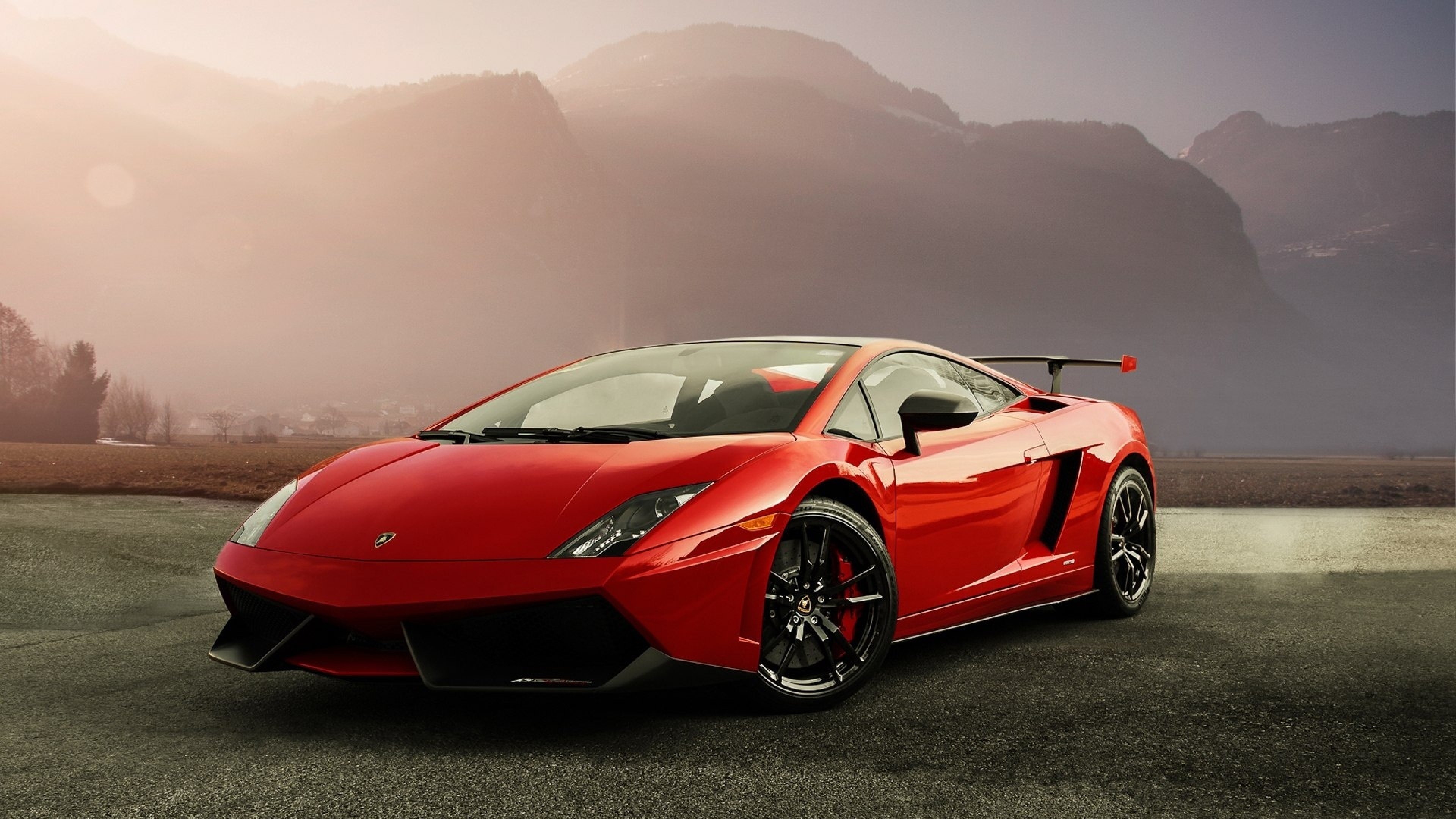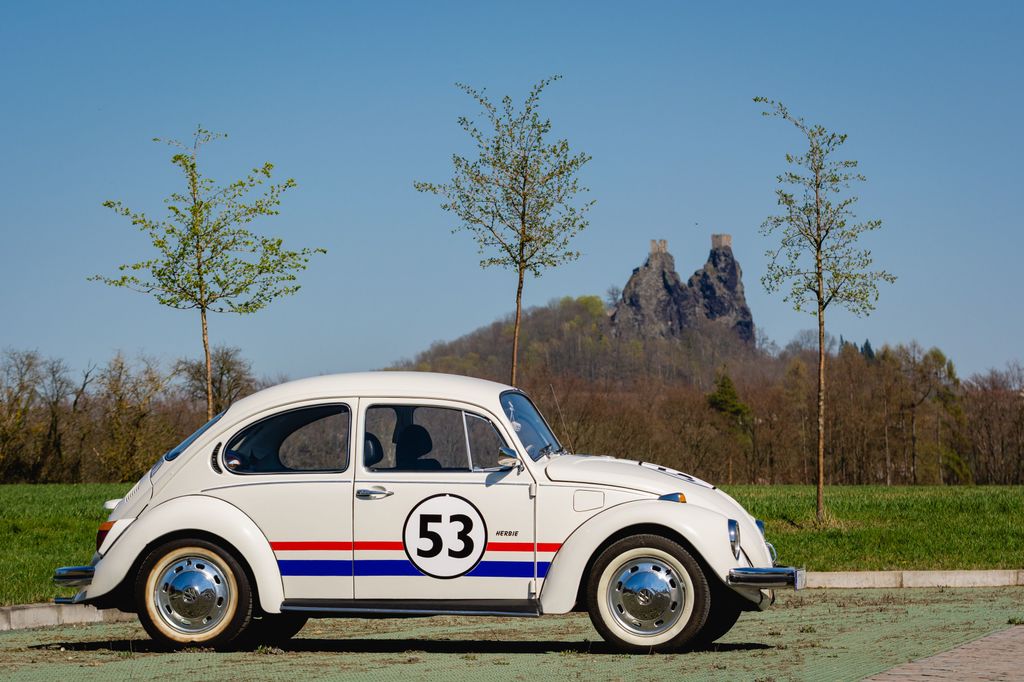
The automotive world is a dazzling, high-stakes arena, particularly when it comes to sports cars and supercars. These aren’t just vehicles; they’re rolling sculptures, feats of engineering, and potent symbols of aspiration. With their mesmerizing designs, six-figure price tags, and the ability to stop traffic (sometimes literally), they occupy an exclusive niche, a grand stage where almost every prominent manufacturer has, at one point or another, tried to unleash their own definitive statement of speed and style. It’s a space that fuels dreams, both for those who create them and those who covet them. But let’s be brutally honest: crafting a supercar that genuinely lives up to its astronomical price and the inevitable tidal wave of hype is a monumental challenge. The landscape is littered with titans—Ferrari, Porsche, McLaren, Lamborghini—brands that have honed their craft over decades, creating models that consistently redefine performance. Trying to elbow into this established hierarchy is no simple task, especially when your creation has to contend with an audience conditioned to expect nothing less than perfection, and often, something more.
The road to automotive glory is paved with good intentions and often, shattered expectations. Many manufacturers have launched what appeared to be potentially great supercars, only for them to falter, stumble, and ultimately disappoint for a myriad of complex reasons. Sometimes, even the most prestigious automakers, brimming with confidence, fall short of transforming their breathtaking concept cars and prototypes—which had built up monumental global anticipation—into production realities that resonate. It’s a harsh lesson in the difference between a dream and the cold, hard asphalt.
So, lean in, because we’re about to embark on an unfiltered journey through automotive history. We’re pulling back the curtain on ten overhyped sports cars that, despite all their flash, sizzle, and sky-high promises, ended up failing miserably to deliver the goods after rolling off the assembly line. Get ready for some spirited opinions, a touch of automotive heartbreak, and perhaps a smirk or two as we dissect what went wrong with these machines that simply couldn’t hack it off the assembly line.
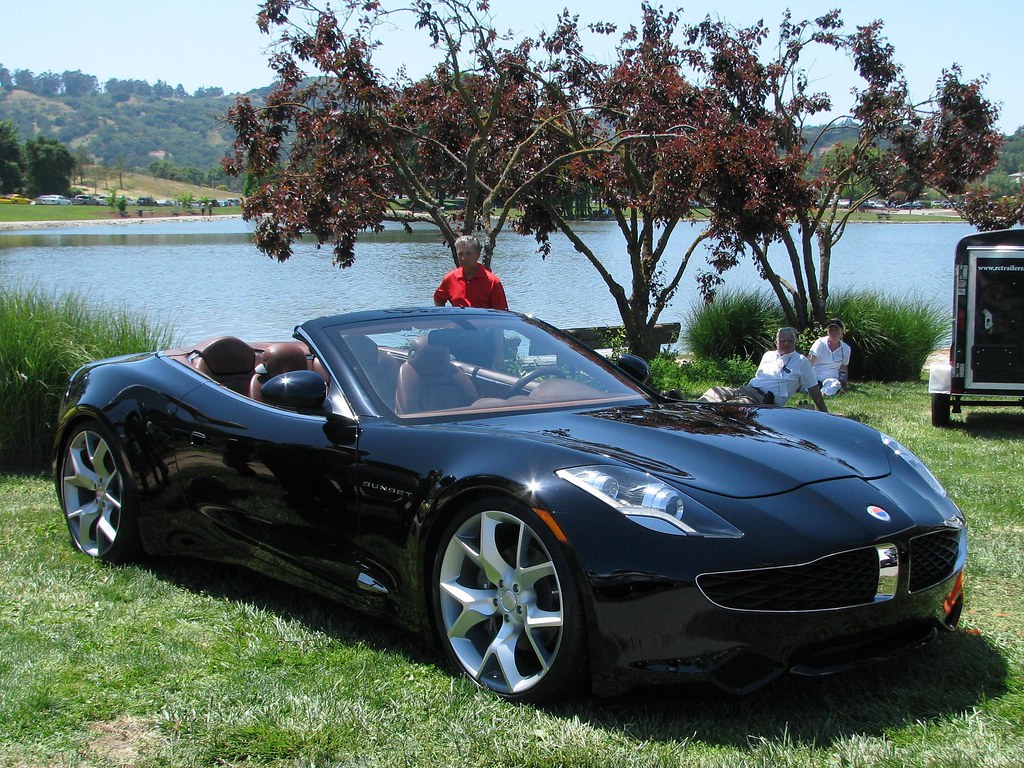
1. **Fisker Karma (2011-2012)**Oh, the Fisker Karma. Remember the breathless anticipation? It was developed as the inaugural production vehicle from Henrik Fisker’s ambitious startup, and on the eve of its release, it felt like a genuinely groundbreaking moment. This wasn’t just another car; it was a statement. The Karma wasn’t merely one of the first plug-in hybrid sports cars to hit the market, flaunting a respectable 402 horsepower and a suite of innovative tech, but it was also, without question, an aesthetically stunning machine that turned every single head it passed. It was gorgeous, green, and geared for the future.
However, the grand vision started to fray at the edges once the rubber hit the road – literally. Despite being marketed with such fervent enthusiasm as a plug-in hybrid that would revolutionize eco-luxury, the Fisker Karma regrettably turned out to be far more inefficient in real-world driving than anyone had hoped. Its performance as an electric vehicle was often underwhelming, and when the gasoline engine kicked in, the fuel economy wasn’t exactly stellar. This efficiency deficit was a significant blow to its core proposition, instantly making its “green” credentials feel a bit… muted.
Then came the additional layers of disappointment. Imagine shelling out upwards of $100,000 for a cutting-edge luxury hybrid, only to be plagued by numerous factory recalls. These weren’t minor glitches; they were significant issues that severely impacted both reliability and, more importantly, customer confidence in a brand that was still trying to establish its footing. The frequent trips back to the dealership for repairs were a stark reminder that innovation, without rock-solid execution, can quickly sour the experience.
Ultimately, the Karma’s bold aesthetic and innovative spirit were undermined by its operational shortcomings and reliability woes. It was a beautiful, ambitious attempt to fuse luxury, performance, and sustainability, but the execution simply didn’t match the grand, game-changing promises. It failed to meet the sky-high expectations it had so masterfully cultivated, leaving behind a legacy of “what if” rather than “what is.” A stunning design, yes, but a compromised driving experience that left many feeling shortchanged.
Car Model Information: 2018 Karma Revero Base
Name: Fisker Karma
Manufacturer: Fisker Automotive
Production: 2011–2012
Assembly: Uusikaupunki
Class: Full-size car,Luxury vehicle
BodyStyle: sedan (automobile)
Layout: Front-engine, rear-wheel-drive layout
Related: ubl
Platform: Chevrolet Volt#Concept vehicle
Engine: GM Ecotec engine#LNF,Straight-four engine
Motor: 120 kW
Abbr: on
Battery: 20.1 kWh
Range: 230 mi
ElectricRange: 32 mi
Drivetrain: PHEV,Hybrid vehicle drivetrain#Series hybrid
Transmission: 1-speed
Charging: 3.3 kW (220 V 15 A as for UK) on-board charger on IEC Type 1 inlet (SAE-J1772-2009)
Wheelbase: 124.4 in
Length: 195.67 in
Width: 78.11 in
Height: 51.57 in
Weight: 5300 lb
Designer: Henrik Fisker
Successor: Karma Revero
Categories: All articles containing potentially dated statements, All articles with dead external links, Articles containing potentially dated statements from September 2016, Articles with dead external links from December 2019, Articles with permanently dead external links
Summary: The Fisker Karma is a luxury plug-in range-extended electric sports sedan produced by Fisker Automotive between 2011 and 2012. The cars were manufactured by Valmet Automotive in Finland.
The United States Environmental Protection Agency (EPA) rated the Karma’s combined city/highway fuel economy at 52 mpg‑US (4.5 L/100 km; 62 mpg‑imp) equivalent (MPG-e) in all-electric mode, and at 20 mpg‑US (12 L/100 km; 24 mpg‑imp) in gasoline-only mode. EPA’s official all-electric range is 32 mi (51 km). Due to the very small cabin interior volume, the EPA rated the Fisker Karma as a subcompact car.
The first deliveries took place in the U.S. in late July 2011, and deliveries to retail customers began in November 2011. Pricing in the U.S. started at US$102,000 for the base model (EcoStandard), US$110,000 for the intermediate EcoSport model and US$116,000 for the top model (the “Animal Free” EcoChic). Around 1,800 units were delivered in North America and Europe through December 2012. The U.S. was the leading market, with about 1,600 units sold.
Production was suspended in November 2012 when the sole battery supplier to Fisker Automotive, A123 Systems, filed for bankruptcy following two battery recalls. Fisker Automotive was unable to carry on production of the Fisker Karma in the absence of its sole battery supplier, with about 2,450 Karmas built since 2011.
After furloughing its US workers in late March 2013, Fisker Automotive filed for bankruptcy in November 2013, after the United States Department of Energy auctioned its debt and sold it to Hybrid Technology LLC for US$25 million.
Following the sale of some of the assets of the company, the designs, rights to a plug-hybrid powertrain and a manufacturing facility in Delaware to the Chinese company Wanxiang, the new owners re-commenced production in September 2016 under the brand name Karma Automotive.
After several announcements by the Wanxiang Group to reintroduce an upgraded version of the Fisker Karma, the car was renamed the Karma Revero and Karma Automotive started taking orders in September 2016.
Get more information about: Fisker Karma
Buying a high-performing used car >>>
Brand: Fisker Model: Karma
Price: $33,963 Mileage: 64,150 mi.

2. **Jaguar XJ220 (1992-1994)**The Jaguar XJ220 – a name that still evokes a pang of wistful nostalgia for many petrolheads. Four short months after Jaguar celebrated a monumental victory at the 24 Hours of Le Mans, they unveiled the XJ220 concept car. And oh, what a concept it was! It boasted truly impressive specifications: a racing-inspired V12 engine, all-wheel drive, and a breathtaking top speed that promised to redefine the supercar landscape. The excitement was palpable, almost intoxicating, prompting a flurry of eager buyers to slap down hefty deposits, betting big on a future legend.
But as the years dragged on, the dream started to curdle. When the production model finally, *finally* arrived four years later, it wasn’t quite the beast everyone had signed up for. Instead of the magnificent, promised V12, it came equipped with a twin-turbo V6 engine. And that cutting-edge all-wheel drive? Gone, replaced by a more conventional rear-wheel-drive setup. It was a classic case of the old switcheroo, leaving those early adopters with a bitter taste in their mouths and a significant dose of buyer’s remorse.
This deviation from the original, sensational concept wasn’t just a minor detail; it was a fundamental betrayal of the XJ220’s very essence. Enthusiasts and original depositors felt misled, and the market reacted accordingly. Demand, which had been so fervent initially, plummeted dramatically, far below Jaguar’s optimistic projections. The magic, the allure of that V12 and AWD combo, had vanished, taking much of the car’s unique selling proposition with it.
Only a paltry 282 units of the XJ220 ever saw the light of day. It became a poster child for over-promising and under-delivering, a testament to how even a powerhouse like Jaguar could fall victim to the pressures of production and market changes. Despite its raw speed and undeniable beauty, the XJ220 will forever be remembered less for what it was, and more for what it could, or should, have been. It was an ambitious swing that, unfortunately, just missed the grand slam.
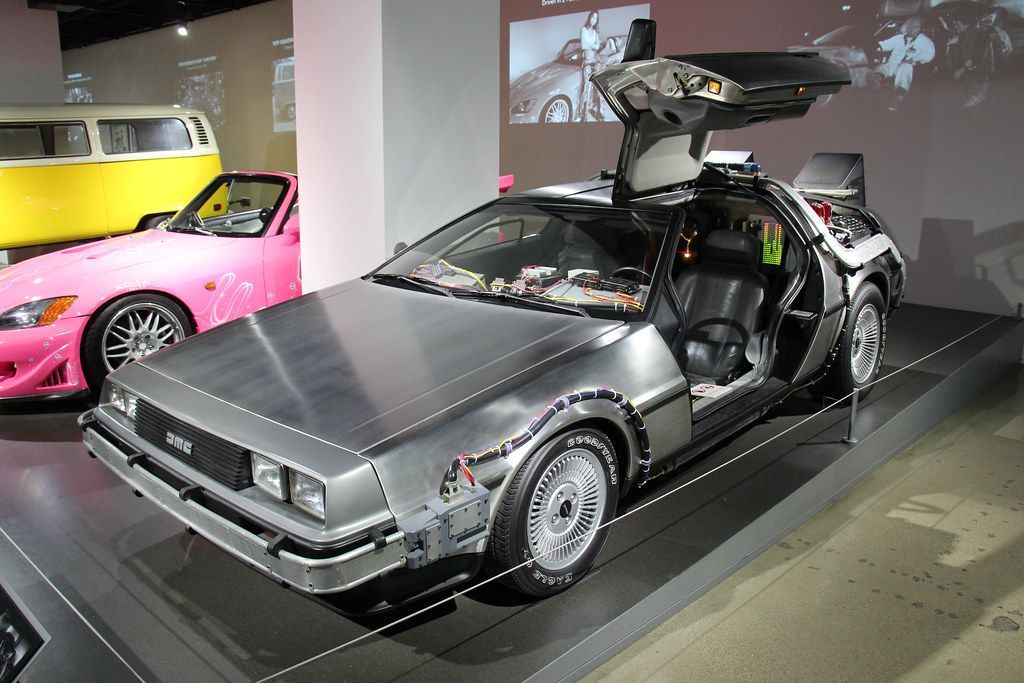
3. **DeLorean DMC-12 (1981-1983)**Alright, let’s get this out of the way for all you cinephiles: yes, the DeLorean DMC-12 is immortalized by *Back to the Future*. It’s a cinematic icon, a bona fide movie star, and those gullwing doors are pure, unadulterated cool. But let’s take off our rose-tinted, 1.21 gigawatt-powered glasses for a moment and look at the DMC-12 purely from an automotive enthusiast’s standpoint. And from that perspective, frankly, it doesn’t make a whole lot of sense as a *sports car*.
Its striking, aggressive design, penned by the legendary Giorgetto Giugiaro, complete with the brushed stainless steel body panels and those dramatic gullwing doors, promised something truly exotic and fast. It screamed “performance” even when it was standing still. You looked at it and expected a roaring beast, a European rival to the best of them. The visual hype was absolutely off the charts, suggesting a car that could take on anything on the road and leave it in its dust.
However, the reality lurking beneath that spectacular skin was, to put it mildly, a significant letdown for anyone seeking actual performance. The DMC-12 was saddled with a modest V6 engine, collaboratively developed by Peugeot, Renault, and Volvo (the PRV engine), which only managed to produce a rather anemic 130 horsepower. For a vehicle that looked like it was designed to break the sound barrier, a sluggish 0-60 mph time of around 10 seconds was not just disappointing; it was excruciatingly slow, especially when stacked against its actual performance-oriented competitors of the era.
The driving experience of the DeLorean was less “time-traveling supercar” and more “underpowered curiosity.” Its heavy stainless steel body didn’t help, further hindering any semblance of agile handling or spirited acceleration. While its unique aesthetic and subsequent film fame ensured its cult status, the DMC-12 ultimately failed to deliver on the fundamental promise of a true sports car: exhilarating performance. It was a triumph of style over substance, an engineering compromise that left a distinct void where the driving thrill should have been.
Car Model Information: 1981 Delorean DMC-12
Name: DMC DeLorean
Alt: 1983 DeLorean
Caption: 1983 DeLorean
Manufacturer: DeLorean Motor Company
Production: January 21, 1981 – December 1982
ModelYears: 1981–1983
Assembly: Dunmurry
Designer: Giorgetto Giugiaro
Class: Sports car
BodyStyle: coupé
Layout: Rear-engine, rear-wheel-drive layout
Doors: Gull-wing doors
Engine: 2.85 L
Abbr: on
Powerout: 130 hp
Transmission: 5-speed manual ,3-speed automatic
Wheelbase: 2413 mm
Length: 4267 mm
Width: 1988 mm
Height: 1140 mm
Weight: 1233 kg
Sp: us
Categories: 1980s cars, All Wikipedia articles written in American English, Articles with short description, Automobiles with backbone chassis, Automobiles with gull-wing doors
Summary: The DMC DeLorean is a rear-engine, two-seat sports car manufactured and marketed by John DeLorean’s DeLorean Motor Company (DMC) for the American market from 1981 until 1983—ultimately the only car brought to market by the fledgling company. The DeLorean is sometimes referred to by its internal DMC pre-production designation, DMC-12, although this was not used in sales or marketing materials for the production model.
Designed by Giorgetto Giugiaro, the DeLorean is noted for its gull-wing doors and brushed stainless-steel outer body panels, as well as its lack of power and performance. Though its production was short-lived, the DeLorean became widely known after it was featured as the time machine in the Back to the Future films.
With the first production car completed on January 21, 1981, the design incorporated numerous minor revisions to the hood, wheels and interior before production ended in late December 1982, shortly after DMC filed for bankruptcy and after total production reached an estimated 9,000 units.
Despite the car having a reputation for poor build quality and an unsatisfactory driving experience, the DeLorean continues to have a strong following, driven in part by the popularity of Back to the Future. 6,500 DeLoreans were estimated to still be on the road as of 2015.
Get more information about: DMC DeLorean
Buying a high-performing used car >>>
Brand: DeLorean Model: DMC-12
Price: $37,500 Mileage: 0 mi.
Read more about: The Unflinching Truth: 14 Automobiles That Dared to Be ‘Rad’ But Landed in the ‘Regrettable’ Bin
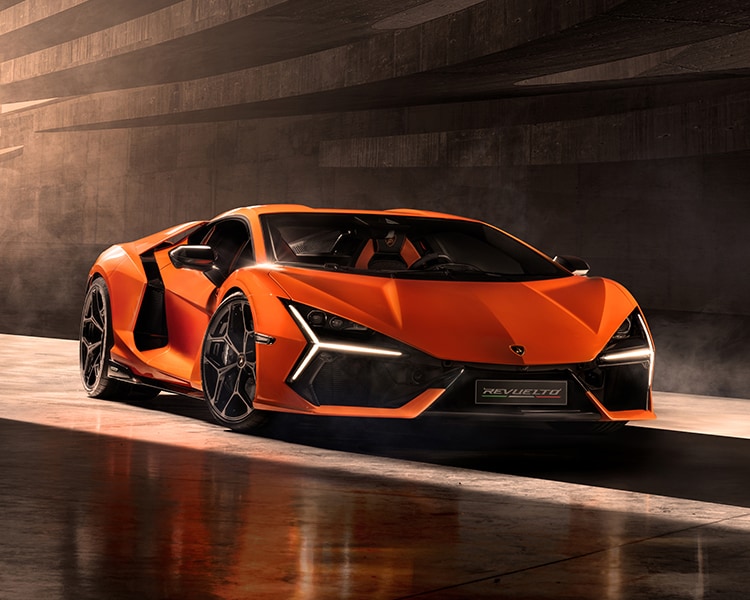
4. **Lamborghini Jalpa (1981-1988)**Even the legendary House of the Raging Bull, Lamborghini, occasionally tries to dip its hooves into slightly less extreme waters, sometimes to its detriment. The Lamborghini Jalpa was conceived as an audacious attempt to create an “entry-level” sports car, a more accessible sibling to the utterly outrageous and poster-worthy Countach. The ambition was noble: to broaden Lamborghini’s appeal, to lure in buyers who yearned for a piece of Italian exoticism but perhaps couldn’t quite stretch to the Countach’s formidable price tag and equally formidable presence.
The Jalpa, with its transversely mounted 3.5-liter V8 engine and slightly less aggressive styling than its big brother, was supposed to be the user-friendly Lamborghini. It offered a targa top option and a slightly more conventional, less intimidating driving experience. The theory was that a broader customer base would appreciate a more civilized, yet still decidedly exotic, package. This was a direct contrast to the Countach’s “form-over-function” philosophy, aiming for a different kind of market share.
But here’s the rub: in the pursuit of making the car “more affordable and less extreme,” Lamborghini inadvertently stripped the Jalpa of the very qualities that define a true Raging Bull. It ultimately lacked the raw, visceral performance and the sheer, unadulterated thrill that enthusiasts expected, almost demanded, from a Lamborghini. The performance, while decent, wasn’t exhilarating; the excitement wasn’t spine-tingling. It was a compromise that ultimately diluted the brand’s core identity of unapologetic excess and extreme performance.
This unfortunate dilution of the Lamborghini experience resulted in lukewarm reception and, consequently, limited demand. With only 410 units produced over its seven-year production run, the Jalpa’s sales figures were undeniably underwhelming for a model intended to be an entry point to the brand. It served as a harsh lesson that when you try too hard to make a Lamborghini for everyone, you risk making it appeal to almost no one who truly understands the brand’s soul. It’s a solid car, but one that sadly failed to live up to the inherent hype of its own badge.

5. **BMW M1 (1978-1981)**Now, the BMW M1. This car is a genuine icon, a poster car for many, and often celebrated today. But let’s set the record straight: its initial trajectory was plagued by significant issues, and its “failure” was certainly not due to a lack of effort or ingenuity on BMW’s part. In fact, the company poured its heart and soul into ensuring the car’s success, envisioning it as a formidable challenger on the race tracks and a tantalizing road-going exotic for discerning buyers.
The M1’s very genesis was rooted in racing. It was initially conceived to dominate a new Manufacturers Competition racing series, a requirement of which was the production of a certain number of road-going versions for homologation purposes. BMW was serious about this; they wanted to build a world-beater. To achieve this ambitious goal, they made a bold move, enlisting the legendary Italian supercar maker, Lamborghini, to assist with the M1’s development and, crucially, its initial production. It was a dream team, or so it seemed.
However, the best-laid plans of mice and Bavarian motor works often go astray. Lamborghini, a company famously prone to financial gymnastics, quickly ran into severe monetary troubles. This unforeseen crisis at their Italian partner caused significant, project-crippling delays, throwing BMW’s meticulously planned schedule into utter disarray. The promising collaboration, which held so much potential for an unprecedented Anglo-Italian performance machine, was abruptly canceled, leaving BMW in a truly unenviable position.
With their partner gone and no other manufacturer capable of stepping in to meet the stringent production timeline, BMW was forced to undertake the monumental task of completing the M1’s production almost entirely in-house, and under immense pressure to meet racing homologation deadlines. This rushed, piecemeal production process, a result of circumstance rather than choice, meant that the M1, while still an engineering marvel, didn’t quite achieve the sublime, flawless execution that its original vision promised. It arrived on the scene as a technical tour de force, but one born from a chaotic journey, ultimately struggling to fully realize its potential and justify the immense internal and external hype surrounding its birth. A true legend, but a deeply troubled one.
Read more about: Hidden Gems: 11 Used Sports Cars That Deliver Thrills and Value Beyond Expectation
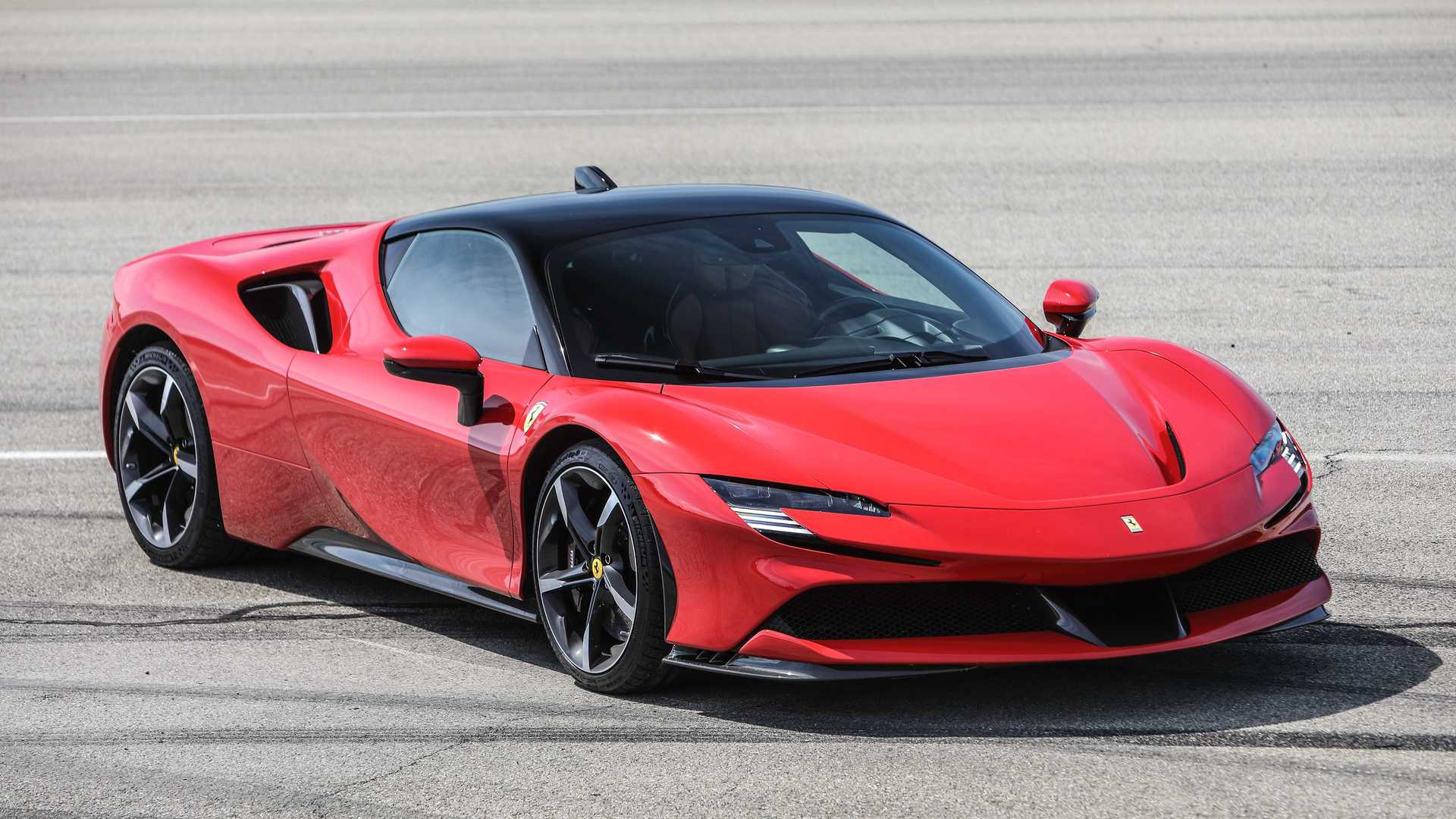
6. **Ferrari F50 (1995-1997)**The Ferrari F50, oh, what a beast! On paper, it was pure Maranello magic: a road car with an F1-derived V12 engine, a manual gearbox, and a breathtaking design that still turns heads today. It was supposed to be the ultimate expression of Ferrari’s racing DNA for the road, a raw, unadulterated performance machine designed to be thrilling in every conceivable way. Undeniably, it was an excellent car, a technical marvel that pushed boundaries in its own right.
Yet, the F50 faced a hurdle that even its racing-inspired heart couldn’t entirely overcome: the colossal shadow cast by its predecessor, the legendary F40. The F40 was, and still is, a benchmark, a visceral, turbocharged monster that captured the raw essence of Ferrari’s spirit. Enthusiasts, almost universally, still regarded the F40 as the superior model, a purer, more uncompromising driver’s car, and this perception significantly dulled the F50’s shine upon release.
Imagine trying to follow a rockstar’s greatest hit with an equally brilliant but different song; the audience is already biased. Despite its undeniable merits and incredible engineering, the F50 struggled with lower demand and interest compared to what Ferrari, or any supercar maker, would typically expect for such a high-caliber machine. It was a victim of timing and an almost impossible act to follow, leaving it in a perpetual state of being ‘the other one.’
Ultimately, the market’s somewhat lukewarm embrace of the F50 resulted in Ferrari producing a relatively small number of units, just 349. While that’s an exclusive club by any measure, it still speaks volumes about its initial reception when compared to the expectations placed upon a flagship Ferrari supercar. The F50 was a phenomenal car, no doubt, but one whose immense hype was unfortunately overshadowed by a truly inimitable legend.
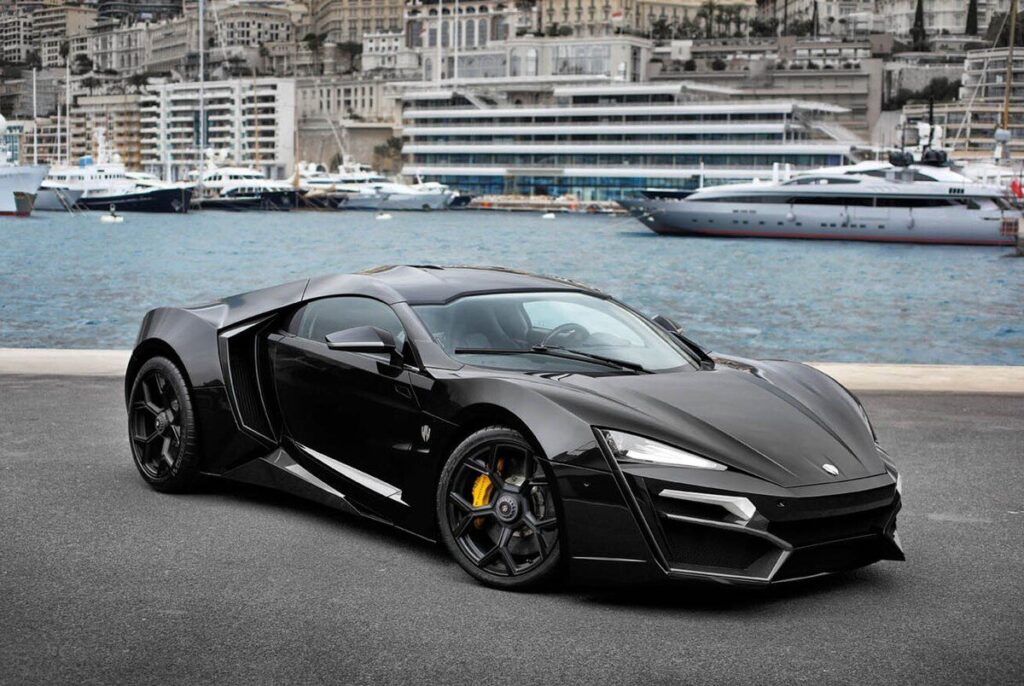
7. **W Motors Lykan HyperSport (2013-2018)**Hold on to your diamond-encrusted seatbelts, because here comes the Lykan HyperSport, a car that roared onto the scene not just with an astronomical price tag of $3.4 million, but also with an appearance in the *Fast & Furious* movie franchise, practically guaranteeing it a place in the automotive hall of fame — or infamy, as it turns out. This was supposed to be the ultimate statement of exclusivity and aggression, an ultra-aggressive design wrapped around claims of a monstrous 740-hp flat-six engine. The hype was as flashy as its optional diamond headlights.
However, as the dust settled from its cinematic debut and the promotional blitz faded, a rather inconvenient truth began to emerge. Despite all the fanfare, the jaw-dropping price, and the bold assertions of its performance prowess, there remains ‘little reliable information to confirm that W Motors ever actually sold a single Lykan HyperSport.’ Let that sink in for a moment. A car designed to be a unicorn, yet no one can quite confirm if anyone ever actually rode it off into the sunset.
This isn’t just a slight oversight; it’s a gaping hole in the credibility of a company trying to play in the rarefied air of hypercars. The entire venture started to look less like a pioneering automotive endeavor and more like a carefully orchestrated illusion. When you’re dealing with claims of groundbreaking performance and exclusivity for millions of dollars, the expectation is delivery, not just dazzling prototypes and movie cameos.
The narrative around the Lykan HyperSport quickly shifted from awe to skepticism, and the context explicitly states, ‘Many people believe the entire venture was a scam.’ Ouch. That’s not a legacy any car manufacturer wants, especially one aiming for the very top tier. It was a vehicle that excelled at generating hype, but spectacularly failed to deliver a verifiable product, making it a poster child for over-promise and under-delivery on a truly epic scale.
Car Model Information: 2020 Jeep Wrangler Sport
Name: Lykan HyperSport
Caption: The Lykan HyperSport in Monaco
Manufacturer: W Motors
Designer: Ralph Debbas
Production: 2013–2018
ModelYears: 2014–2018
Assembly: Jebel Ali,Dubai,United Arab Emirates
Class: Sports car
BodyStyle: coupé
Layout: Rear mid-engine, rear-wheel-drive layout
Engine: Porsche flat-six engine,twin-turbo
Transmission: Sequential manual transmission
Wheelbase: 2625 mm
Abbr: on
Length: 4480 mm
Width: 1944 mm
Height: 1170 mm
Weight: 1380 kg
Sp: uk
Successor: W Motors Fenyr SuperSport
Categories: All articles with unsourced statements, Articles with short description, Articles with unsourced statements from October 2024, Cars introduced in 2013, Cars powered by boxer engines
Summary: The Lykan HyperSport is a limited-production sports car manufactured by W Motors, a United Arab Emirates-based company, founded in 2012 in Lebanon with the collaboration of Lebanese and Italian engineers. It is the first sports car to be designed indigenously in the Middle East; however, the bodywork, chassis and engine were all produced in Germany and assembled in Italy.
The production of the car was limited to a total of seven units. The first pre-production Lykan HyperSport was unveiled to the public at the Qatar Motor Show in February 2013.
Get more information about: W Motors Lykan HyperSport
Buying a high-performing used car >>>
Brand: W Motors Model: Lykan HyperSport
Price: $25,000 Mileage: 54,707 mi.
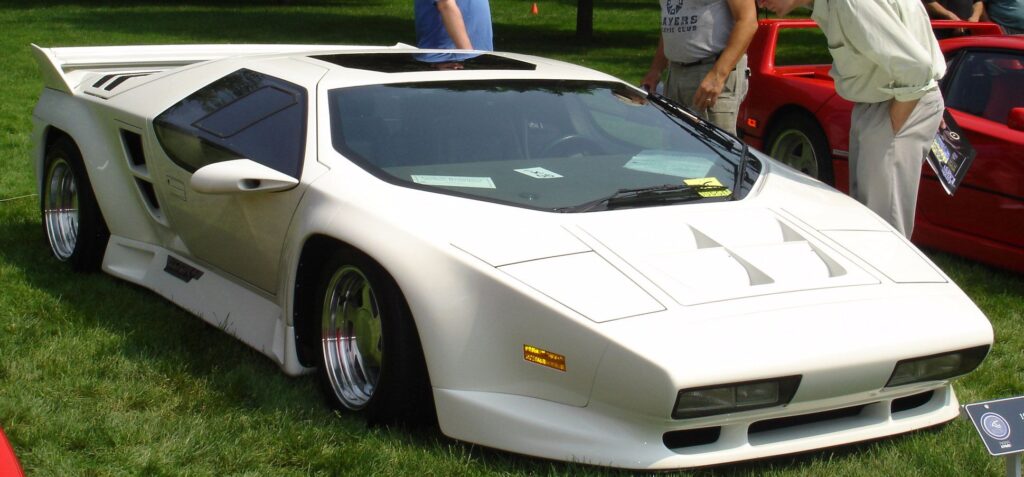
8. **Vector W8 (1990-1993)**Ah, the Vector W8, a car that looked like it drove straight out of a futuristic concept drawing and onto the tarmac. Vector was already a brand synonymous with pushing boundaries, known for producing ‘wild cars’ that captivated imaginations. The W8, based on the equally ambitious W2 prototype, promised ‘immense potential’ with its ‘eye-catching wedge-shaped design’ and a ‘Chevy-sourced twin-turbo V8’ under the hood. This was destined to be America’s answer to the European supercar elite, a true technological tour de force.
The initial promises were nothing short of audacious. We were told the Vector W8 would go into production ‘just one year later’ than its unveiling, at a price that would be ‘no higher than $125,000.’ And for those with a need for speed, the whispers of ‘top speeds around 242 mph’ made it sound like a jet fighter disguised as a road car, ready to redefine the fastest cars of the 1990s. The anticipation was palpable, a testament to the sheer audacity of its design and engineering claims.
But as is so often the case with such grand ambitions, reality delivered a brutal dose of cold water. Production wasn’t just delayed; it was ‘delayed for a staggering nine years.’ Nine years! In the fast-moving automotive world, that’s an eternity. And if that wasn’t enough to sour the deal, the initial promised price was ‘tripled,’ skyrocketing it into an entirely different financial stratosphere.
Beyond the logistical nightmare, the W8 also ‘struggled to meet those claims under real conditions’ regarding its top speed. While it certainly utilized ‘impressive materials and engineering for its time,’ consistent performance and reliability were ‘ongoing challenges.’ It was a car that looked incredible and made incredible claims, but ultimately, it became a tragic tale of over-ambition and under-execution, a truly flashy supercar that, despite its potential, failed to reliably deliver on its grandest promises.

9. **Lexus LFA (2011-2013)**Now, the Lexus LFA. This isn’t a story of outright failure in terms of performance; in fact, it’s quite the opposite. The LFA was an ‘extraordinary machine,’ a testament to Toyota’s singular ‘ambition to create a near-perfect supercar capable of competing with Ferrari and Lamborghini.’ From its carbon fiber construction to its bespoke Yamaha-tuned V10 engine, every aspect of the LFA screamed meticulous engineering and uncompromising quality. And let’s be honest, ‘its V10 engine produces one of the best engine sounds in automotive history,’ a truly thrilling symphony for any petrolhead.
This wasn’t just a car; it was a passion project, a decade-long odyssey of engineering perfection. To ‘achieve this level of excellence, Toyota and Lexus invested over 10 years and millions of dollars in development.’ This was a no-expenses-spared endeavor, aiming to build not just a fast car, but an emotionally engaging, peerless driving experience. The hype was real, but it wasn’t built on outlandish claims; it was built on genuine, painstaking development and a clear goal to stand shoulder-to-shoulder with the best in the world.
However, the path to perfection often comes with a steep price, and in the LFA’s case, that price was truly eye-watering. With a ‘price tag of over $400,000,’ it was squarely in ultra-exclusive territory. But here’s where the ‘disappointment’ truly kicks in, not for the driver, but for the balance sheet: ‘Lexus reportedly lost nearly half a million dollars on each LFA sold.’ Think about that for a second. Toyota, a company famous for lean manufacturing, was knowingly taking a massive hit on every single unit.
So, while the LFA was a triumphant technical and emotional success for those lucky enough to drive or own one, it was an undeniable financial failure for its creators. It failed to live up to the commercial hype of being a viable, profitable venture, proving that even creating a ‘near-perfect supercar’ doesn’t guarantee a successful business model. It remains a legendary machine, adored by enthusiasts, but a stark reminder that even the most brilliant engineering can’t always defy economic gravity.
Car Model Information: 2012 Lexus LFA Coupe 2D
Name: Lexus LFA
Manufacturer: Toyota
ModelCode: LFA10
Production: December 2010 – December 2012,500 units
Assembly: Toyota, Aichi
Class: Sports car
BodyStyle: coupé
Layout: Front mid-engine, rear-wheel-drive
Designer: Kengo Matsumoto (chief designer)
Engine: Toyota LR engine#1LR-GUE,Firing order#Even and uneven firing order,V10 engine
Transmission: List of Aisin transmissions#Longitudinal rear-wheel drive (transaxle),Automated manual transmission
Wheelbase: 2605 mm
Abbr: on
Length: 4505 mm
Width: 1895 mm
Height: 1220 mm
Weight: 3483 lb
Order: flip
Categories: All Wikipedia articles written in British English, All articles containing potentially dated statements, All articles with dead external links, Articles containing Japanese-language text, Articles containing potentially dated statements from 2020
Summary: The Lexus LFA is a two-door sports car produced between 2010 and 2012 by the Japanese carmaker Toyota under its luxury marque, Lexus. Lexus built 500 units over its production span of two years. The development of the LFA, codenamed TXS, began in early 2000. The first prototype was completed in June 2003, with regular testing at the Nürburgring starting in October 2004. Over the decade, numerous concept cars were unveiled at various motor shows. The first concept appeared in January 2005 at the North American International Auto Show as a design study. In January 2007, a more aerodynamic design was introduced, and in January 2008, a roadster version was showcased. The production version of the LFA debuted at the Tokyo Motor Show in October 2009—commemorating Lexus’s 20th anniversary—and the official manufacture of the car began on 15 December 2010 at the Motomachi production facility in Toyota, Aichi. The 4.8 L 1LR-GUE V10 engine, as fitted to the LFA, produces a power output of 412 kilowatts (560 PS; 553 hp) and 480 newton-metres (350 lb⋅ft), sufficient to give the car a 0–97 km/h (60 mph) of 3.6 seconds and a maximum speed of 325 kilometres per hour (202 mph). The LFA’s body mass is composed of sixty-five per cent carbon fibre-reinforced polymer, and incorporates various lightweight materials such as aluminium, titanium and magnesium. Lexus ended production of the LFA on 17 December 2012, two years and two days after it commenced. The LFA has received awards including Road & Track’s “Best of the 2009 Tokyo Auto Show” and Top Gear’s “5 Greatest Supercars of the Year”.
Get more information about: Lexus LFA
Buying a high-performing used car >>>
Brand: Lexus Model: LFA
Price: $849,990 Mileage: 4,724 mi.

10. **Cadillac XLR (2004-2009)**Last but not least on our list of overhyped machines is the Cadillac XLR, an ambitious effort by GM’s luxury division to craft a sophisticated ‘two-seater convertible coupe with plenty of power.’ Based on the highly respected Chevy Corvette platform, it certainly looked the part of a sleek, American luxury roadster, promising ‘great driving dynamics and impressive power’ paired with Cadillac’s signature refinement. It was a bold statement, aiming to carve out a niche against established European rivals.
The XLR was ‘a beautiful supercar’ (as stated in one context entry, though ‘supercar’ is a stretch for the XLR, I’ll use it to reflect the *intended* market perception, quickly pivoting to how it didn’t meet that expectation), featuring a retractable hardtop and advanced technology, all designed to elevate the Cadillac brand. But therein lay its core problem: it ‘wasn’t enough to set it apart from rivals like the Mercedes SL or even the Chevy Corvette.’ It occupied a strange middle ground, not quite as sharp or raw as the Corvette, and not quite as refined or prestigious as a Mercedes SL.
Its performance, while decent, was ‘dulled by its heavier weight and emphasis on luxury over sportiness.’ The very features meant to enhance its luxury status, like the ‘retractable hardtop and high-tech features,’ ‘added complexity and weight,’ making the XLR feel ‘more like a grand tourer than a true sports car.’ It was a car that struggled with an identity crisis, never quite excelling enough in either the luxury or sports car categories to truly stand out.
Consequently, ‘the interest in the XLR never grew as Cadillac had hoped,’ leading to a disappointingly ‘shortened production run.’ Despite its promising foundation and attractive design, the XLR simply failed to capture the imagination or the wallets of its target audience. It was a well-intentioned attempt at luxury performance, but one that ultimately faded into obscurity, a reminder that even a solid platform and good intentions can’t always overcome a muddled identity and intense competition.
**The End of the Road for Overhyped Rides**
And there you have it, folks, a journey through the annals of automotive ambition where expectation often collided with stark reality. We’ve unmasked ten sports cars that, for all their dazzling looks, audacious claims, and sometimes even genuine engineering brilliance, just couldn’t quite live up to the tidal wave of hype they generated. From pioneering hybrids that fumbled their green promises to track-bred machines that lost their soul in production, and even multi-million-dollar phantom hypercars, these vehicles remind us that in the cutthroat world of high-performance automobiles, merely looking the part isn’t enough.
Car Model Information: 2004 Cadillac XLR Base
Name: Cadillac XLR
Manufacturer: Cadillac
Production: 2003–2009
ModelYears: 2004–2009
Predecessor: Cadillac Allanté
Class: Grand tourer
BodyStyle: roadster (automobile)
Layout: FR layout
Platform: GM Y platform
Assembly: Bowling Green, Kentucky
Designer: Tom Peters (prod. exterior: 1999, 2000)
Related: Chevrolet Corvette (C5),Chevrolet Corvette (C6)
Transmission: GM 5L40-E transmission#5L50,GM 6L80 transmission
Engine: Northstar engine series#LH2 (VIN “A”),V8 engine
Wheelbase: cvt
Length: cvt
Width: cvt
Height: cvt
Weight: cvt
Categories: All Wikipedia articles written in American English, Articles with short description, Cadillac vehicles, Cars discontinued in 2009, Cars introduced in 2003
Summary: The Cadillac XLR is a convertible car which was manufactured and marketed by Cadillac from 2003 to 2009 across a single generation. It is a two-seat roadster and has a power retractable hardtop. The XLR was introduced at the 2003 North American International Auto Show as a halo model for Cadillac, and began production for the 2004 model year. The design was inspired by the 1999 Evoq concept.
The XLR shares much of its construction design with the C6 Chevrolet Corvette that was introduced one year later, including its GM Y platform, hydroformed steel perimeter side rails, folded steel backbone, tubular steel front and rear bulkheads, aluminum windshield structure, magnesium steering-column mounts, aluminum/balsawood composite floorboards and composite bodywork technology. Unique to the XLR are its engine, bodywork, interior, suspension settings, and power retractable hardtop. Both Chevrolet and Cadillac were manufactured at GM’s Bowling Green Assembly, with the XLR manufactured at a dedicated work station adjacent to the Corvette assembly line, engineered to facilitate routing of componentry to the XLR’s dedicated assembly station.
The XLR entered production a year before the Chevrolet, as the first production Cadillac with radar-based adaptive cruise control (ACC) or both heated and cooled seats — was subsequently nominated for the North American Car of the Year award for 2004. It has Bulgari designed interior instruments, head-up display, adaptive suspension, rear-mounted transmission and near 50/50 front-to-rear weight distribution.
Get more information about: Cadillac XLR
Buying a high-performing used car >>>
Brand: Cadillac Model: XLR
Price: $35,999 Mileage: 3,370 mi.
It’s a tough lesson for manufacturers, but an invaluable one for enthusiasts: always look beyond the glossy brochure and the breathless pronouncements. Dig into the real-world driving experience, scrutinize the delivery against the promises, and remember that sometimes, the most legendary cars aren’t always the ones that shouted the loudest. So, the next time a new ‘world-beater’ flashes its carbon fiber and horsepower figures, remember our ten cautionary tales. Drive on, but drive wisely, because not all that glitters on the assembly line is truly gold.


